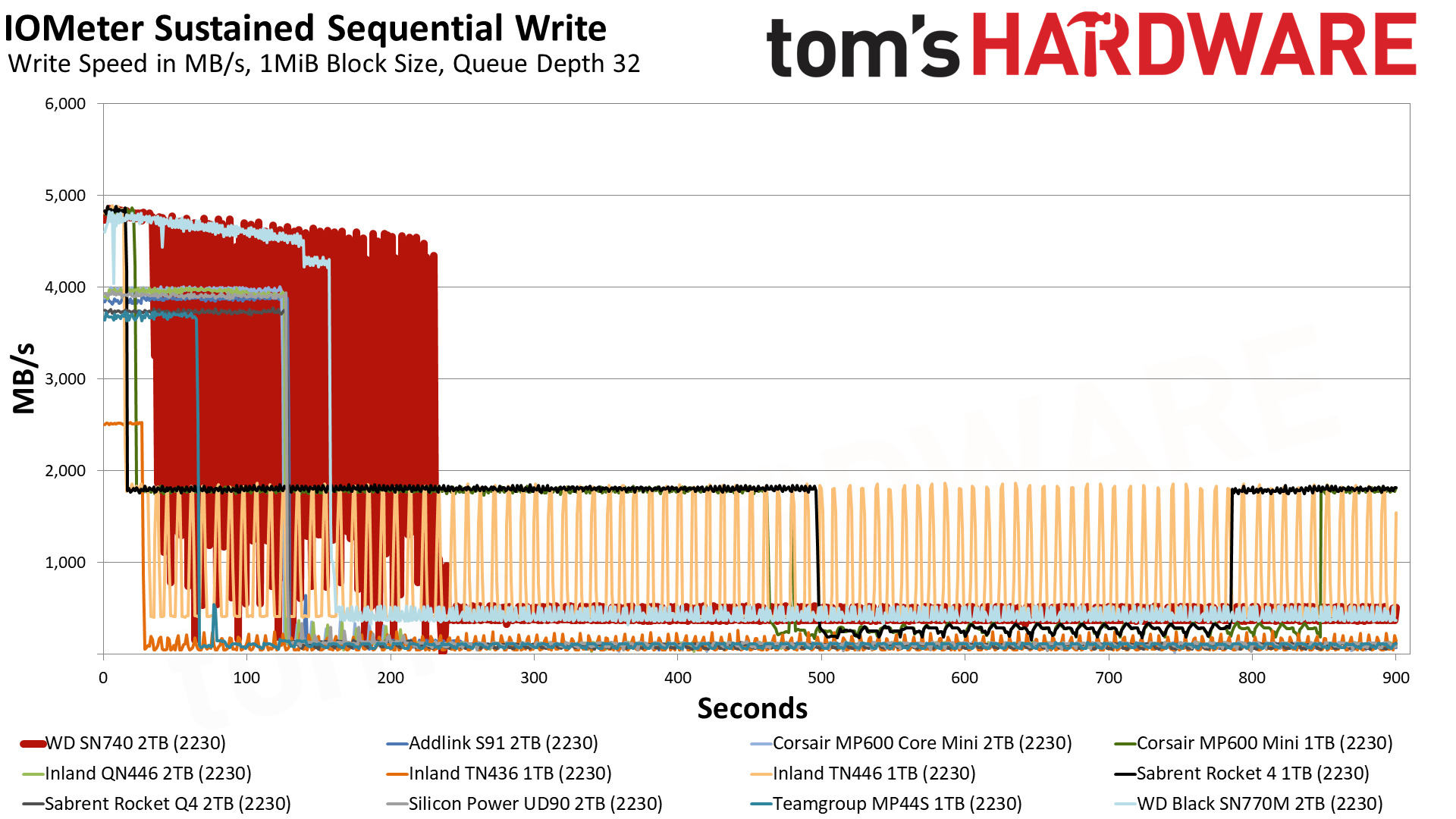Have you seen the
SN740 review... There is some flashes of brilliance from the Sabrent Rocket Q4 2tb (QLC drive) where it is besting the majority of the TLC drives, only Inland TN446 1TB appears to keep up (MP600 CORE MINI 1TB, SN740 and SN770M are the other TLC drives to compare to).
With some more controller magic as well as onpackage DRAM or software magic (System DRAM allocation),The next generation drives may only be QLC and likely superior to the current TLC best results. The ultimate limiter for QLC nand chips is the native write to QLC chips once pseudo QLC is exhausted, but with all of these tricks, that threshold can be pushed far out and give more opportunities for cache recovery.
I do find it interesting that while everyone else is climbing the layer count, WD seems to be regressing here(Others are at like 176+ layers WD in these products is going from 112 layers to 96 layers). Are they getting rid of old stock? Or did Kioxia and WD take a different path to scaling 3D Nand, perplexed... Would love to understand their positioning going forward to compete with Hynix, Samsung, and Micron.



